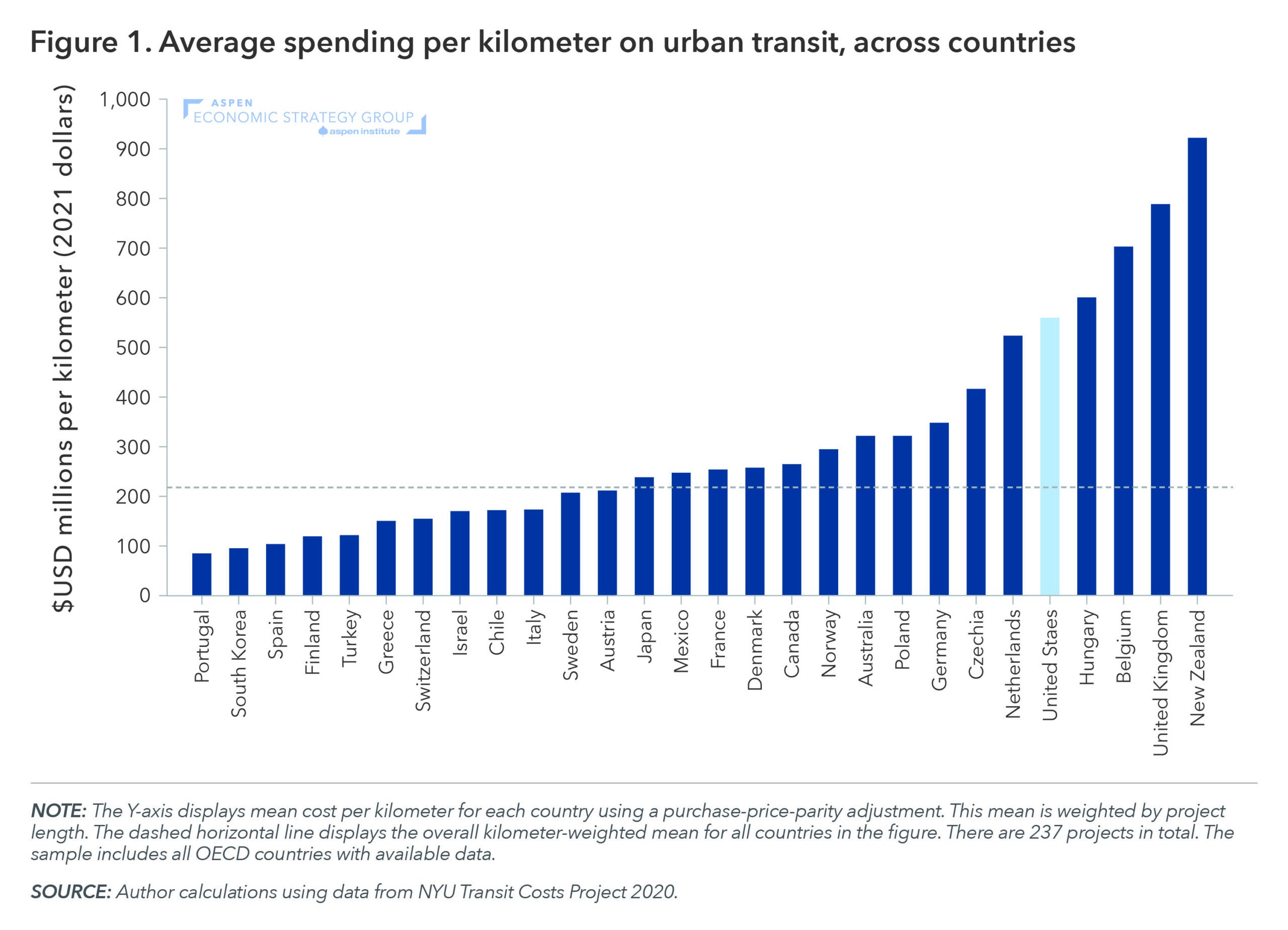
State Capacity for Building Infrastructure

This paper, by Zachary Liscow, examines state capacity for infrastructure construction in the United States. It identifies three elements of state capacity that drive up costs and slow down timelines: insufficient personnel, onerous procedures, and a lack of adequate tools. Liscow offers specific suggestions about ways to address these challenges and improve US public capacity to carry out infrastructure projects.
High costs, lengthy construction timelines, and increased input prices are core hindrances to US state capacity. The cost of building urban-transit infrastructure in the US is approximately $560 million per kilometer, over two and a half times the OECD average. These costs have increased sharply over time, more than tripling between the 1960s and 1980s and continuing to rise since.
At the same time, construction timelines are inefficiently long. For instance, when it comes to energy infrastructure, the typical deployment timeline for offshore wind in the US is between three and five years, and for extra-high-voltage power lines, the typical timeline is between five and 13 years.

Liscow identifies three forces driving these challenges in the US:
Personnel
Employment of government workers available for state infrastructure capacity have barely increased or have declined over time, and federal government pay has fallen behind private-sector pay over time. As there are fewer government workers per dollar of work done, planning and management are increasingly outsourced. To address these issues, Liscow recommends employing more infrastructure experts and aligning public-sector salaries with those in the private sector to attract skilled professionals. Expanding the size and quality of the government workforce in this respect would improve planning efficiency and reduce timelines, generating its own cost savings.
Cumbersome Procedures
It takes a relatively long amount of time to acquire infrastructure permits in the US, compared to other developed countries, and the process is lengthened by substantial litigation around infrastructure permitting. Liscow proposes simplifying administrative procedures and judicial-review rules to streamline the construction process. Empowering the executive branch relative to the judiciary can reduce the use of litigation to stall projects. He recommends streamlining feedback processes to better understand public preferences while reducing the time to gather such information.
Lack of Tools
Data infrastructure and transparency are weak, making it hard for the government and the public alike to understand the challenges at hand. Coordinated long-term planning is also lacking, hampering the development of renewable energy transmission lines and transportation infrastructure. Liscow first recommends that federal and state governments invest in better data systems, which would enable agencies to gain better insight into their projects and help the public advocate for more efficient spending. Second, coordinated planning would allow agencies to hire appropriate personnel and accelerate project execution. Moreover, well-developed project plans could mitigate potential litigation by addressing a wider array of stakeholder interests from the outset.
Liscow concludes by emphasizing the importance of state capacity to the effective use of government infrastructure-construction dollars. State capacity is not just an issue for infrastructure. In a wide range of government projects, hiring enough government personnel, paying enough to attract talent, having an appropriate number of procedural rules, and giving personnel the tools to succeed can help make government work better—producing better outcomes for the public and building trust in government.
Suggested Citation: Liscow, Zachary., 2024. “State Capacity for Building Infrastructure” In Strengthening America’s Economic Dynamism, edited by Melissa S. Kearney and Luke Pardue. Washington, DC: Aspen Institute. https://doi.org/10.5281/zenodo.14036826.